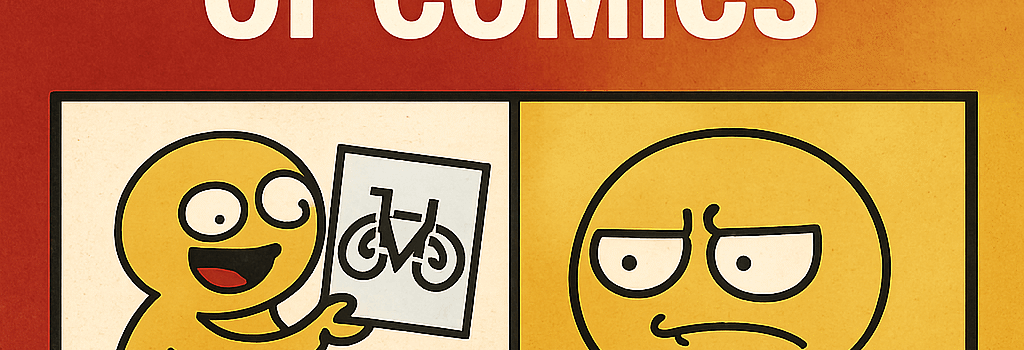Memes: The Next Evolution of Comics

From the earliest Peanuts strips to today’s viral image macros, comics and memes share a fundamental mechanism: the interplay of visual and verbal elements to convey humor, irony, or social commentary. As digital culture evolves, memetic media have not only become ubiquitous but are also reshaping narrative structures, distribution models, and creation workflows.
Historical Context and Definitions
In 1976, evolutionary biologist Richard Dawkins coined “meme” in The Selfish Gene to describe units of cultural transmission—catchphrases, melodies, fashions. Two decades later, the Internet gave birth to the modern meme: an image or short video template, remixed with custom text, that spreads virally across social platforms.
The Convergence of Visual and Verbal Humor
Like one-panel comics—The Far Side, Little Lulu, Ziggy—memes rely on a template-plus-caption model. Meme templates such as “Distracted Boyfriend” or “This Is Fine” function as static canvases. Users supply text layers via HTML5 canvas APIs in web tools (for example, Imgflip’s open-source JavaScript editor), mixing SVG overlays and CSS text styling to achieve pixel-perfect captions.
The Role of AI in Meme Creation
In 2024 and 2025, AI-driven generative models have accelerated meme production. Text-to-image systems (Stable Diffusion XL, Midjourney v6, DALL·E 3) leverage CLIP embeddings and diffusion processes to generate novel templates from prompts. Simultaneously, large language models like GPT-4 Turbo (175B parameters) suggest captions optimized for virality, using reinforcement learning from human feedback (RLHF) to refine punchlines.
- Cloud Pipelines: Many meme-generation services deploy microservices on AWS Lambda or Google Cloud Functions, scaling to thousands of concurrent users. Templates are stored in S3 or Cloud Storage; captions are rendered via headless Chromium instances.
- Latency & Throughput: Real-time meme generation demands sub-500 ms response times. Caching popular templates in edge CDNs (AWS CloudFront, Cloudflare) reduces TTFB (time to first byte) below 100 ms.
- Prompt Engineering: Developers fine-tune LLM prompts—”Generate a witty one-line caption about remote work anxiety”—to steer outputs. Fine-tuning on meme corpora improves relevance and humor scores by ~15% (per internal A/B tests).
Meme Analytics and Metrics
Quantifying meme success borrows from social network analysis and digital marketing analytics:
- Viral Coefficient: Average number of secondary shares per user.
- Engagement Rate: Likes, comments, and shares tracked via RESTful API calls to platform endpoints (X, Instagram, Reddit) and aggregated in real time.
- Sentiment Analysis: NLP pipelines (spaCy, Hugging Face Transformers) classify audience reactions as positive, negative, or neutral.
- Image Similarity: Perceptual hashing (pHash) and neural embedding comparisons detect remix variations and track template lifecycles.
Future Trends: Beyond the Infinite Canvas
Scott McCloud’s concept of the “infinite canvas” envisioned digital comics freed from page constraints. Memes represent a different infinity: a template pad with endless sheets. Each iteration—whether via human remix or AI-generated variant—adds to a global storyboard of cultural commentary.
Emerging trends include:
- Blockchain & NFT Memes: Memetic artifacts minted on Ethereum or Solana, enabling provenance tracking and micro-royalties for popular templates.
- Augmented Reality Memes: ARKit/ARCore apps overlay dynamic captions onto real-world scenes, blending comic panels with user environments.
- Interactive & Dynamic Memes: WebGL frameworks (Three.js, Babylon.js) power meme experiences where viewers click through branching narratives or trigger animated panels.
Expert Perspectives
“Memes are digital comics at scale. They reuse visual tropes like a comic’s panels, but distribute globally with sub-second velocity,” says Michelle Ann Abate, professor of English at The Ohio State University.
“AI expands the meme toolkit, but the core creative leap—the juxtaposition of image and text—is as human as ever,” adds Scott McCloud, comics theorist and author of Reinventing Comics.
Conclusion
Memes have emerged as a new comic form—combinatorial, participatory, and powered by cloud-native architectures. Whether generated by hand or via AI pipelines, they continue to evolve the art of sequential storytelling, blurring lines between creator and audience, static image and dynamic narrative.